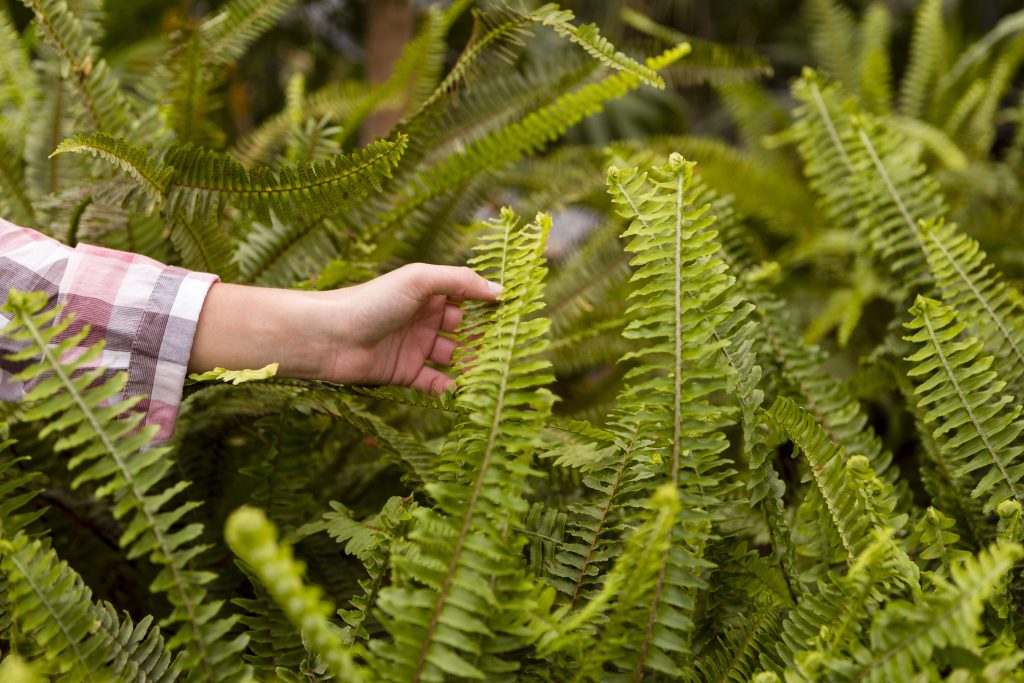When it comes to creating a lush, green, and tranquil outdoor space, ferns are an excellent choice. Their delicate fronds and vibrant greenery can transform any garden into a serene haven. But with so many varieties to choose from, which fern stands out as the best for outdoor growth? Look no further than the magnificent Ostrich Fern (Matteuccia struthiopteris).

Why Choose the Ostrich Fern?
The Ostrich Fern is renowned for its striking appearance and hardy nature. Here’s why it should be your top pick for outdoor cultivation:
- Elegant Fronds: The Ostrich Fern boasts tall, arching fronds that can reach up to 5 feet in length. These fronds, resembling ostrich plumes, add a dramatic and elegant touch to any garden.
- Hardiness: This fern is exceptionally hardy, thriving in USDA zones 3-7. It can withstand cold winters and hot summers, making it a versatile choice for various climates.
- Shade Tolerance: Ostrich Ferns thrive in shaded or partially shaded areas. If you have a spot in your garden that doesn’t receive much direct sunlight, this fern will flourish there.
- Low Maintenance: Once established, Ostrich Ferns require minimal care. They are relatively pest-resistant and don’t demand frequent watering, making them ideal for busy gardeners.
- Soil Preferences: These ferns prefer moist, well-drained soil rich in organic matter. They can tolerate a range of soil types, provided they are kept consistently moist.
Planting and Caring for Ostrich Ferns

1. Site Selection: Choose a shaded or partially shaded spot in your garden. Avoid areas with direct, harsh sunlight, as this can scorch the delicate fronds.
2. Soil Preparation: Enrich the soil with compost or organic matter to ensure it is fertile and well-draining. While Ostrich Ferns prefer moist conditions, they don’t thrive in waterlogged soil.
3. Planting: Dig a hole large enough to accommodate the fern’s root ball. Place the fern in the hole, ensuring the crown is level with the soil surface. Fill in with soil and water thoroughly.
4. Watering: Keep the soil consistently moist, especially during the fern’s first growing season. Mulching around the base can help retain moisture and regulate soil temperature.
5. Maintenance: Remove any dead or damaged fronds to encourage healthy growth. In late fall, after the fronds have died back, you can cut them to the ground to make way for new growth in the spring.
Benefits of Growing Ostrich Ferns
Beyond their aesthetic appeal, Ostrich Ferns offer several benefits for your garden:
- Erosion Control: Their extensive root systems help stabilize soil, making them excellent for preventing erosion on slopes and embankments.
- Habitat for Wildlife: The dense foliage provides shelter for various garden creatures, promoting biodiversity.
- Air Purification: Like many plants, ferns improve air quality by filtering pollutants and releasing oxygen.
Conclusion
The Ostrich Fern is a stellar choice for any gardener looking to enhance their outdoor space with minimal effort. Its stunning appearance, hardiness, and low maintenance needs make it a standout among outdoor ferns. Whether you’re a seasoned gardener or just starting, the Ostrich Fern promises to bring a touch of elegance and tranquility to your garden.



